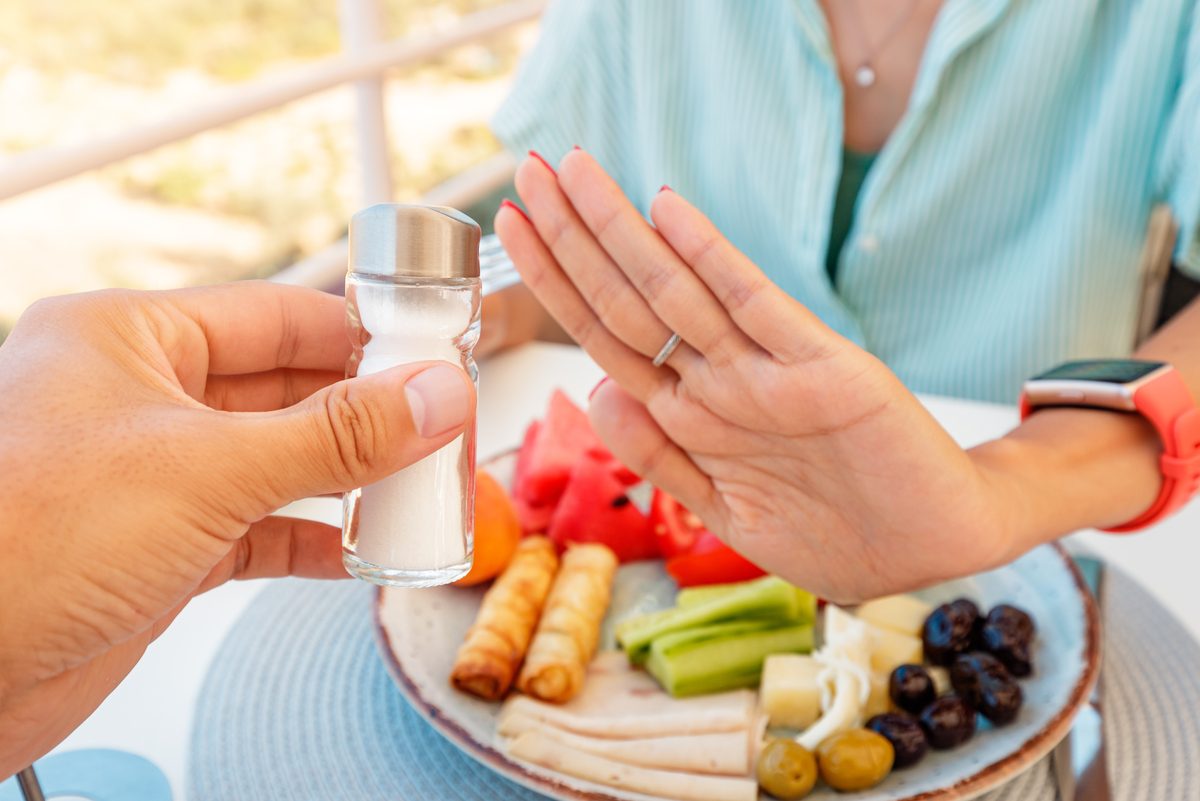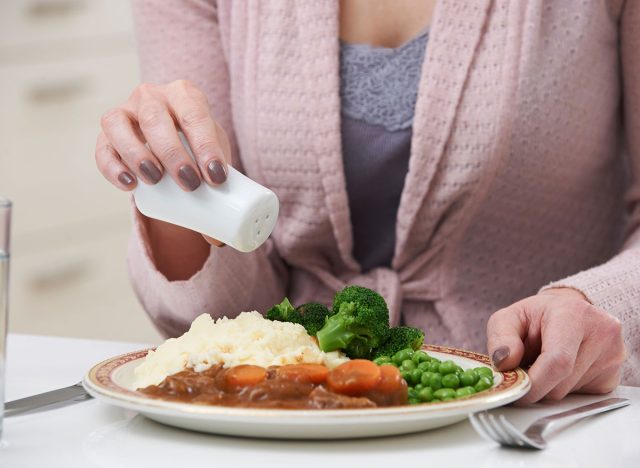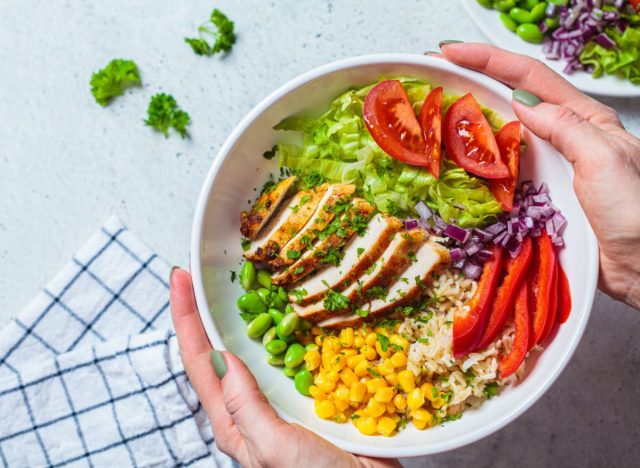Adopting This Simple Habit May Help You Avoid Heart Failure, New Study Says

Salt has long been seen as the enemy of our cardiovascular health, with low-sodium foods and diets falling among the top suggestions to avoid high blood pressure and other cardiovascular conditions like heart disease. However, recent research shows that lowering your risk of heart complications may not have to require drastic reductions in sodium after all. In fact, the implications of a recent study suggest that one simple trick may actually reduce your risk of cardiovascular disease: All you need to do is refrain from adding salt to your food after it’s prepared.
Published by the Journal of the American College of Cardiology in December ’22, the study looked at the dietary habits of 176,570 individuals living in the UK to assess the relationship between added salt in foods and the risk for heart failure and heart disease, including ischemic heart disease (IHD). When the research began, every individual was completely free of cardiovascular disease (CVD). However, after following up with participants a little over 11 years later, researchers discovered a significant association between the frequency at which salt was added and heart health. There were 9,963 cases of cardiovascular events, 2,007 cases of stroke, 2,269 incidents of heart failure, and 6,693 participants who reported IHD, also known as coronary heart disease.

Researchers learned that the risk of CVD seemed to decrease when participants added salt to their food less often while also incorporating a DASH-inspired diet. The DASH diet—which stands for dietary approaches to stop hypertension—is focused on lowering blood pressure and does so through foods high in calcium, magnesium, and potassium. It also focuses on eating patterns that are lower in saturated fat, added sugar, and sodium. According to the Mayo Clinic, the DASH diet limits sodium intake to about 2,300 milligrams a day, which is on par with the Dietary Guidelines for Americans, 2020-2025. While 2,300 milligrams of salt may seem like a lot, this roughly equates to about the size of one teaspoon of table salt per day.
Those who reported “never or rarely” adding salt to their food while also following a DASH-inspired diet reportedly had the lowest instances of CVD risk, according to the study’s findings. Additionally, when it comes to how adding salt to prepared foods correlates to different types of CVDs, researchers’ findings pointed to a strong connection between this action and heart failure as well as IHD, but not strokes. The significant association between the the frequency at which salt is added and heart health seemed undeniable to researchers.
“Overall, we found that people who don’t shake on a little additional salt to their foods very often had a much lower risk of heart disease events, regardless of lifestyle factors and pre-existing disease,” Lu Qi, MD, Ph.D., HCA Regents Distinguished Chair and professor at the School of Public Health and Tropical Medicine at Tulane University, reportedly told SciTechDaily. “We also found that when patients combine a DASH diet with a low frequency of adding salt, they had the lowest heart disease risk.”

At first glance, this may not seem like much of a surprise, as the conversation around lowering salt intake in order to help with your heart health is not a new one. Not only does the CDC warn that eating too much salt can raise blood pressure, leading to greater risk for heart disease or stroke, but also this is one of the primary reasons why the DASH diet was designed with lower sodium consumption in mind.
Prior to this research, it was generally assumed that reducing your risk for cardiovascular disease hinged on totally eliminating salt from your diet altogether while cooking. But the most fascinating revelation are the implications pertaining to when you might include salt in your food. According to the study’s central illustration, participants’ exposure to salt was only measured based on how much salt they added after their meals were cooked. That said, that little extra sprinkling of salt evidently has the potential to make an enormous difference with your heart health.
However, the implications of these recent findings might mean that there’s potential to drastically reduce your risk of heart complications by simply refraining from adding more salt to your dish after plating, serving, and sitting down with your meal at the table. If you want to go a step further and incorporate the DASH diet into your eating plan, you can potentially lower your risk of CVD even more, but this study suggests you can begin by simply removing the habit of adding salt to your prepared food.
Of course, this is only one study and healthcare needs are not one-size-fits-all. So, if you have cardiovascular concerns, before embarking on a new eating regiment, it’s still imperative that you consult your healthcare providers about your diet and eating plan. At the same time, you can have some peace of mind knowing that the start of your cardiovascular health and wellness journey might just be as easy as getting rid of that salt shaker on your dining room table.
- Source: https://www.sciencedirect.com/science/article/abs/pii/S0735109722070358?via%3Dihub
- Source: https://www.mayoclinic.org/healthy-lifestyle/nutrition-and-healthy-eating/in-depth/dash-diet/art-20048456
- Source: https://www.dietaryguidelines.gov/sites/default/files/2020-12/Dietary_Guidelines_for_Americans_2020-2025.pdf
- Source: https://ars.els-cdn.com/content/image/1-s2.0-S0735109722070358-fx1.jpg









